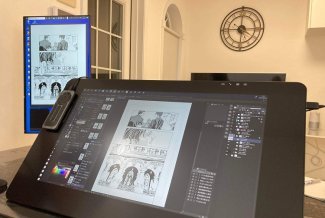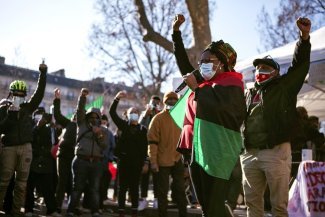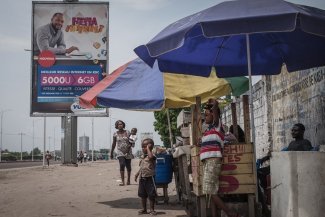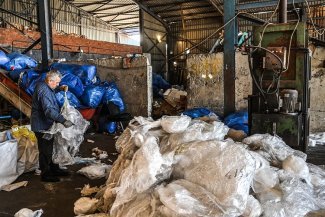On a street corner in Buenos Aires, “No fue magia” (“It wasn’t magic”) is painted on a wall above the initials of President Cristina Fernández de Kirchner.
The graffiti is praising what is seen as the success of Argentina’s president – and that of her late husband and predecessor, Néstor Kirchner – since the country emerged from the 2001-2002 financial crisis.
It also shows how adept the couple have been in building and sustaining a fervent following for their brand of populist left politics, known as Kirchnerism.
When Mr Kirchner took office with the (still ruling) Justicialist Party in 2003, “he vowed to lead Argentines out of hell and into purgatory. He told them they weren’t responsible for the crisis, but victims,” says Eduardo Fidanza, director of Poliarquía Consultores, a public opinion and political consulting firm in Buenos Aires.
Mr Kirchner blamed the free-market policies of the 1990s that had been prescribed by the International Monetary Fund and were advocated by the big banks and corporations. He said these policies pushed Argentina into a crisis of 25 per cent unemployment and 54 per cent poverty in the early 2000s.
In contrast, he pursued inclusive growth aimed at benefiting all members of society, not just big business, as he claimed. Recovery came quickly – and robustly. The economy grew by an average of 6 to 8 per cent each year between 2003 and 2011, and unemployment fell below 7 per cent.
Soaring international commodity prices and demand played a significant role in this recovery as Argentina is one of the world’s leading suppliers of beef, corn, soybeans and soybean derivatives like soy oil.
Mr Kirchner helped fuel exports, chiefly by keeping the exchange rate undervalued. The export boom fattened central bank reserves and brought budget and trade surpluses.
Through the good times, the Kirchners put a focus on culture, labour and the poor, as well as addressing Argentina’s difficult past. They reopened the trials into state torture during the 1976-83 military dictatorship, ramped up state funding for film and television programming, and made football free to watch on TV. Same-sex marriages were legalised. They created child and pregnancy subsidies to help the poor through the crisis, and nationalised Aerolíneas Argentinas, the national airline and YPF, the national oil company. And unions regained their collective bargaining powers, which help to boost wages and pensions.
All of this instilled a sense of stability after so many years of volatility, making the Kirchners “appear as the saviours of Argentine society,” Ana Wortman, a cultural sociologist at the University of Buenos Aires, tells Equal Times. This won them widespread support from Argentina’s middle class, not just the poor and working classes.
Cristina Fernández succeeded her husband in 2007 with 45 per cent of the vote, and won re-election in 2011 with an unprecedented 54 per cent, helped by sympathy for her husband’s death in 2010.
Now 62, Cristina will leave office on 10 December 2015 with a 40 per cent approval rating, rare in a country where most second terms – and some firsts – end in crisis.
Amongst her supporters, Cristina has “a quasi-religious status for saving Argentina from catastrophe,” Wortman says.
Economic woes
Her presidency, however, brought a change to the Kirchnerism model that could be its undoing. Cristina aggrandised her husband’s message. It was no longer about reaching purgatory; it was about remaining in heaven, living in abundance and not accepting austerity, Fidanza says.
The first years of recovery came without many hitches as factories used their neglected capacity after the economic crisis to meet rising consumer demand. But investment didn’t keep pace, due to currency controls, price caps, protectionist trade policies, heavy regulation and other interventionist measures that cut profit potential and made it harder to do business.
Inflation soon hit double digits and peaked at 40 per cent in 2014, before coming down to 27 per cent this year as a slowing economy cut demand. Blackouts and petrol shortages worsened, and infrastructure creaked. Fifty-one people died in a train crash in 2012 after a series of derailments.
“The economic model is unsustainable,” says Eduardo Levy Yeyati, an economist and author of Porvenir, an exploration of future development models for Argentina. “We’re squeezing the last drops of lemon so that people have the feeling of wellbeing.”
The government is running a 6 per cent budget deficit on track to reach 8 per cent in 2016. Shrinking dollar reserves are making it harder to service the national debt and pay for essential imports like energy and food. Manufacturers get dollars in rations for importing equipment and parts, slowing their output. Companies can’t readily send profits abroad, putting a damper on investment. Argentina can’t borrow abroad to ease the strain until a US$100 billion default from 2001 is fully settled, and hiking taxes any further could spark protests like a four-month farm revolt in 2008. Or it could turn more union bosses against Kirchnerism, and deepen a polarisation between its followers and opponents.
Presidential election
The hard times are expected to run through to 2016, a forecast that would mar any party’s chances to retain power.
However, that’s not the case for Kirchnerism. The ruling Justicialist Party candidate, Daniel Scioli, is ahead in the polls for the 25 October general election.
A former vice president of Mr Kirchner and the current governor of Buenos Aires, Scioli, 58, has a 10-point lead on Buenos Aires Mayor Mauricio Macri, a 56-year-old conservative businessman. In third place is Sergio Massa, 43, a congressman and former chief of cabinet for President Kirchner.
All three are more moderate than President Kirchner, and there’s a consensus amongst them that adjustments must be made to rekindle growth, says Levy Yeyati.
This includes settling the defaulted debts, addressing an overvalued exchange rate, cleaning up bogus economic data, scrapping capital controls, cutting inflation and slashing subsidies to rein in the budget deficit.
Such steps are expected to attract what has largely eluded Kirchnerism: foreign investment. But the initial cost is likely to be job losses, higher utility rates and lower purchasing power.
“It was one thing to take the country from hell to purgatory, and another to take it from heaven to purgatory,” says Fidanza.
The belt-tightening won’t come easy. There will be the threat of strikes no matter who becomes president, says Norberto Galasso, a historian and author of Kirchnerism (2003-2015): The Project that Transformed Argentina.
Argentines have grown used to welfare and advancement under Kirchnerism, from buying new cars to sending their children to university for the first time, he says.
“Many people want the model to continue no matter the difficulties”.
For this reason, Galasso believes, Cristina has fielded a close confidant, Carlos Zannini, as Scioli’s candidate for vice president. Zannini, 61, will keep Scioli in check and maintain Cristina’s influence to run for president again in 2019.
“Cristina is a fighter for her convictions,” he says. “I don’t see her dedicated to caring for her grandchildren. She will continue to be an influencer.”









